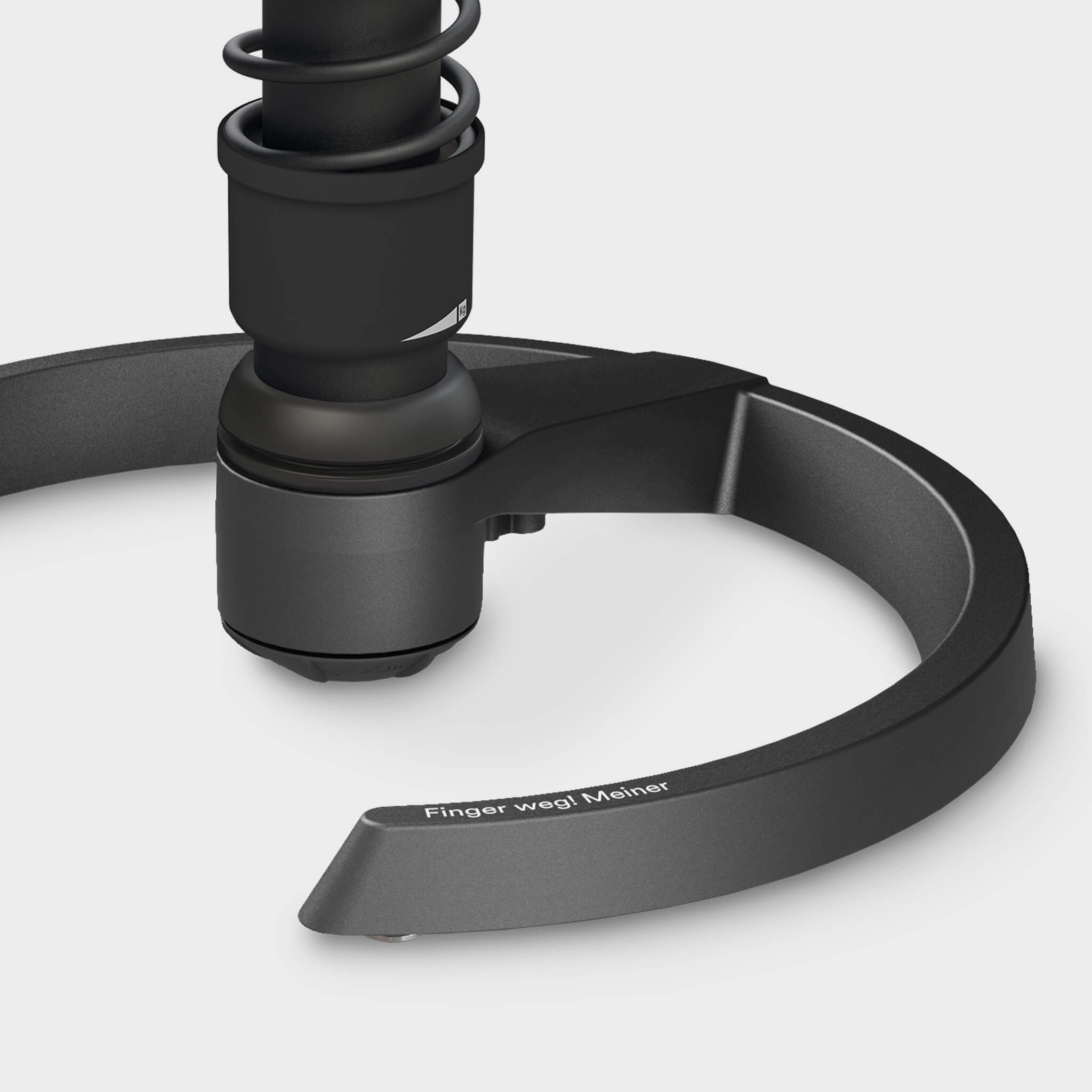Back pain is one of the most common complaints experienced by expectant mothers. Studies show that over 60 percent of pregnant women suffer from back pain.
This pain can be particularly stressful for women who spend a lot of time sitting or standing during pregnancy, whether in the office or at home in their home office. The pain occurs mainly in the lower back, i.e. in the lumbar region, at the sacrum or in the pelvic floor area. Do you know?
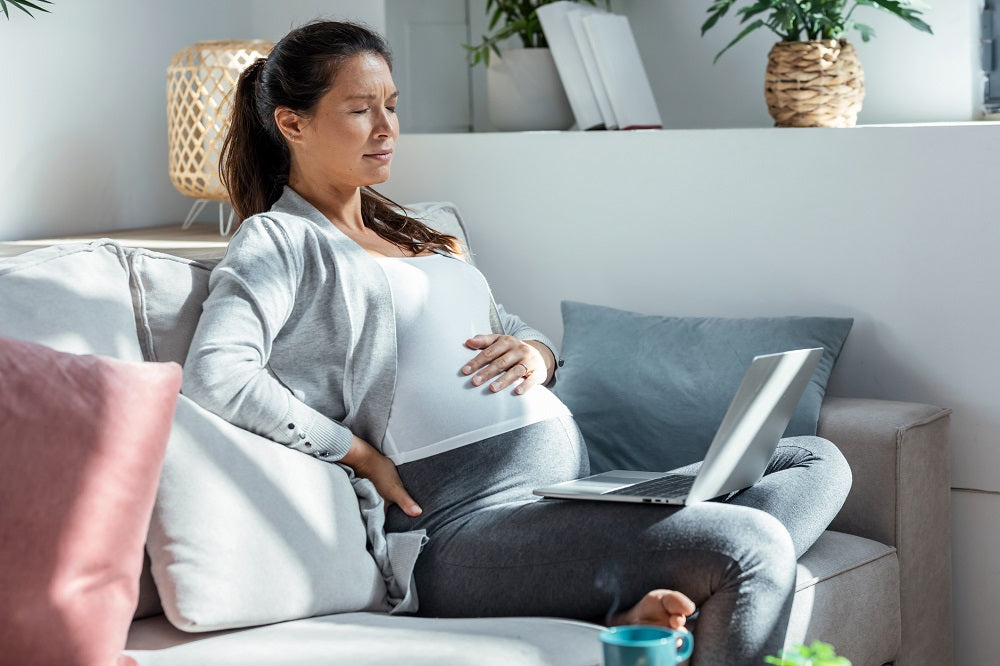 Long periods of sitting in the office or home office are particularly stressful for pregnant women.
Long periods of sitting in the office or home office are particularly stressful for pregnant women.The good news is that there are ways you can prevent pregnancy-related back pain or at least alleviate it. We give you practical tips on how you can strengthen your back, especially when sitting and standing in everyday life or at the office, so that your pregnancy is as comfortable as possible.
What exactly causes back pain in expectant mothers?
Back pain due to hormonal changesHormonal changes play a crucial role, among other things. The increased release of the hormones relaxin and progesterone ensure that the joints, ligaments and muscles become softer and more elastic, so that the pelvis can be stretched so that the baby has enough space in it. This leads to the pelvis losing stability and pain in the pelvic floor can occur.
However, the ligaments and tissue become more flexible not only in the pelvic floor area, but also in the spine. This weakens the support of the spine, which, in combination with the additional physical strain, can cause back pain.
Poor posture can cause pain
As the belly grows, the body's center of gravity shifts more and more forward, which causes many women to eventually develop a hollow back. This incorrect posture of the back causes tension in the muscles and back pain.
Weight gain as a pain trigger
And then there is the extra weight. Back pain is particularly common in the last trimester of pregnancy because as the weight increases, the expectant mother's mobility becomes increasingly restricted. The bones and joints have to bear the extra weight and the strain on the muscles in the back is high.
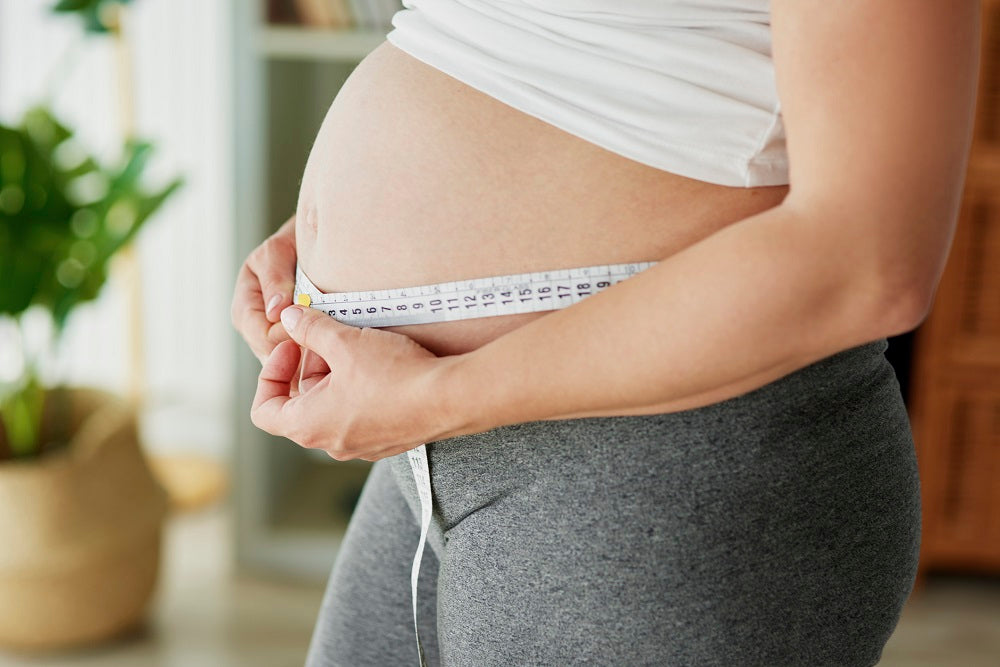 As their belly size increases, many pregnant women develop a hollow back. This poor posture causes back pain.
As their belly size increases, many pregnant women develop a hollow back. This poor posture causes back pain.When the sciatic nerve presses
If you experience stabbing pain during pregnancy, it may be that a nerve is trapped. The sciatic nerve in particular causes problems for many pregnant women. This runs from the lumbar spine downwards, over the gluteal muscle and the thigh, and all the way to the foot. If the stabbing pain persists for a longer period of time, you should definitely consult your doctor.
And how can I keep the back pain under control?
Exercise is extremely important during pregnancy, even if it becomes more difficult as the pregnancy progresses. There is a risk of becoming sluggish, especially in the office.Here we show you how you can stay active in the office or home office and strengthen your back and relieve the strain on your pelvic floor.
 'With a height-adjustable desk like the Aeris Active Desk, you can regularly switch between standing and sitting.
'With a height-adjustable desk like the Aeris Active Desk, you can regularly switch between standing and sitting.Active, back-friendly standing:
The topographical 3D structure in the standing mat activates your foot reflex zones, relaxes your muscles and keeps your body moving: like walking on forest floor. You can use the active standing mat with shoes or barefoot. In addition to your office workstation, the standing mat is also a good companion at home. In fact, anywhere you have to stand for long periods of time.
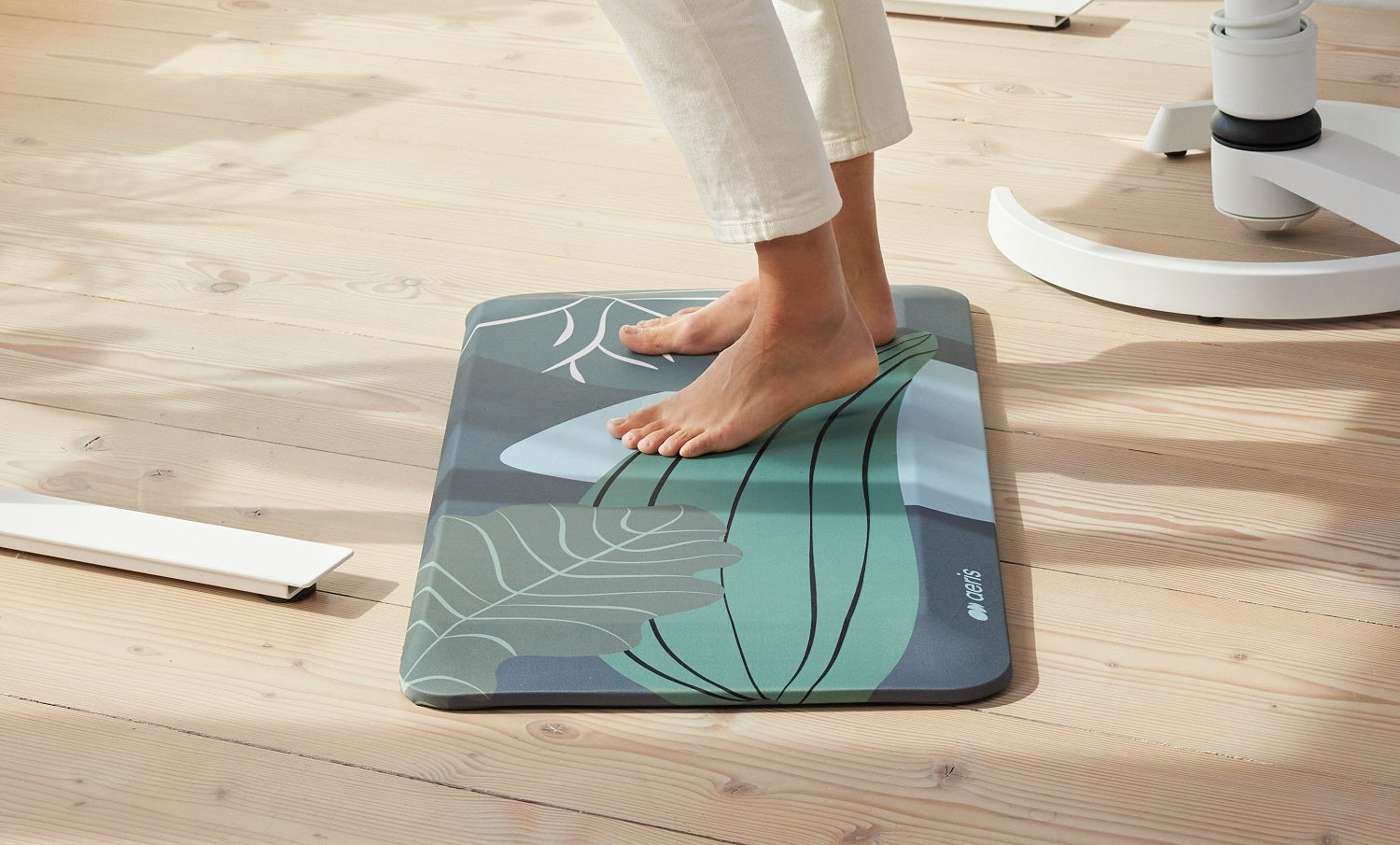 The Aeris Muvmat makes long periods of standing more comfortable for pregnant women.
The Aeris Muvmat makes long periods of standing more comfortable for pregnant women.Active, back-friendly sitting:
If you don't have a height-adjustable, ergonomic office chair yet, now is the time. You can't force your employer to buy one, but it doesn't hurt to ask.
At Aeris, we have developed ergonomic office chairs that allow you to move in all three dimensions while sitting. That means forwards and backwards, left and right, and up and down.
These chairs, such as the Aeris Swopper, are not only fun, but are also extremely kind to the pelvic floor. You can always get back into a healthy position if you tend to slump over when sitting for a long time. The free movement to the right and left as well as forwards and backwards automatically relieves the strain on your pelvis, hips and of course your back.
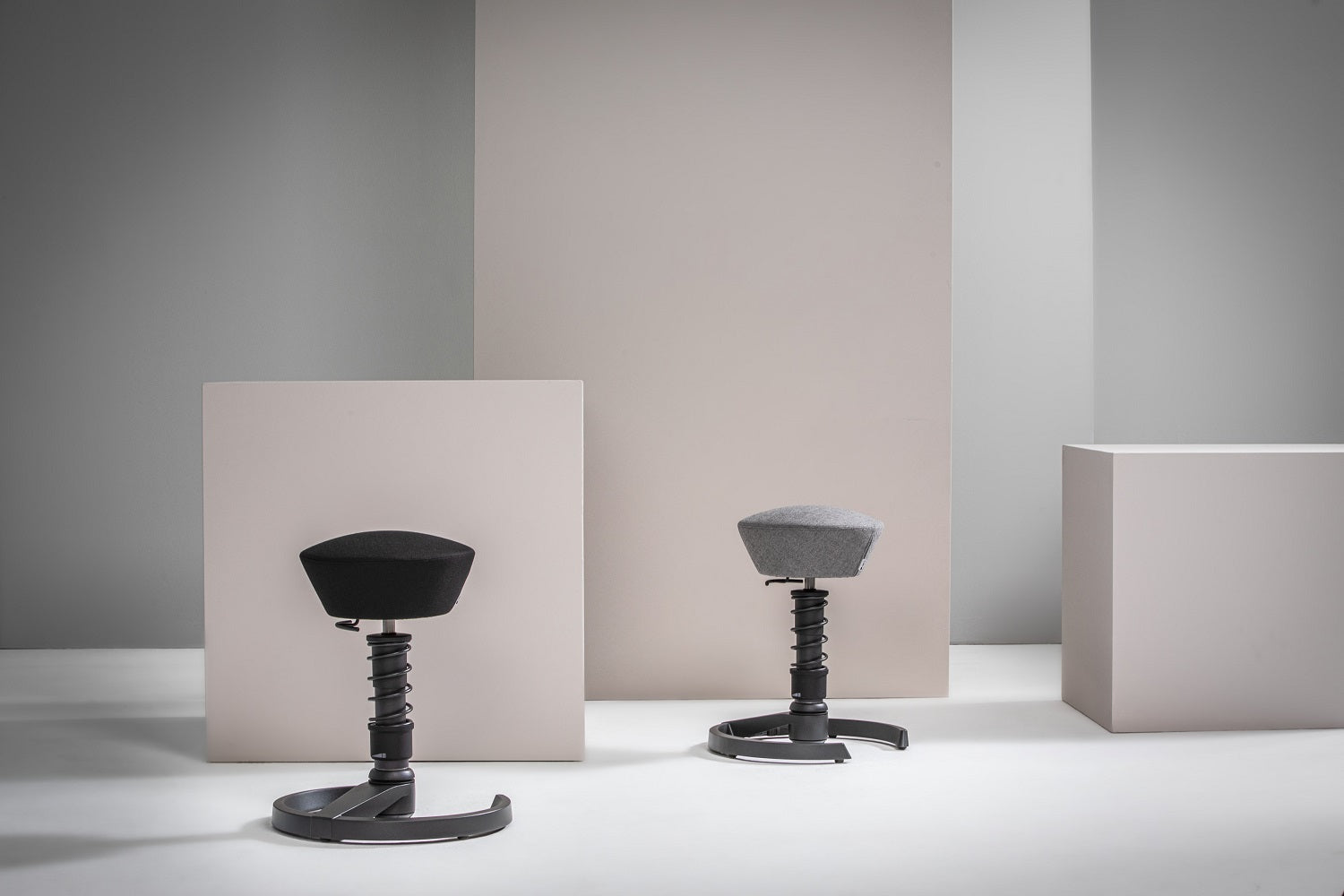 The Aeris Swopper strengthens the back through free movements in all directions.
The Aeris Swopper strengthens the back through free movements in all directions.Sitting on the Aeris Swopper promotes mobility, particularly in the lower lumbar spine (LS) and the isosacral joint (SI joint) area, and also targets the muscles that stabilize this area. This stabilization is extremely important during pregnancy, as the weight of the child and the belly puts a particular strain on the LS and SI joint regions.
And the swinging ability of the Aeris Swopper , i.e. the up and down movement that gently cushions the body when sitting down and supports it when standing up, is very pleasant during pregnancy. On the other hand, it is the special tilting ability of the chair that makes it particularly easy for pregnant women to first shift their weight forward when standing up and then stand up when the tip of their nose is slightly in front of their stomach.
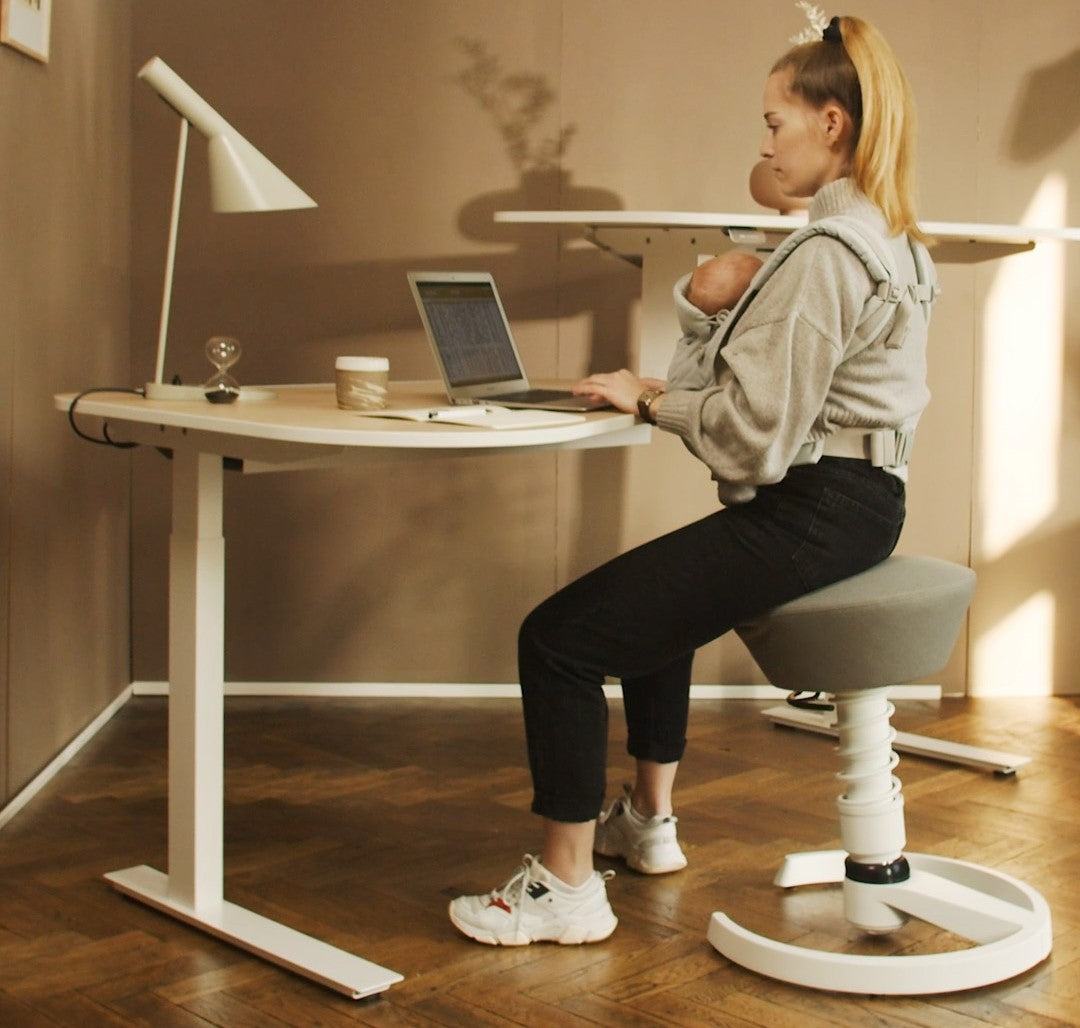 Rocking on the Aeris Swopper has a calming effect on mother and child.
Rocking on the Aeris Swopper has a calming effect on mother and child.